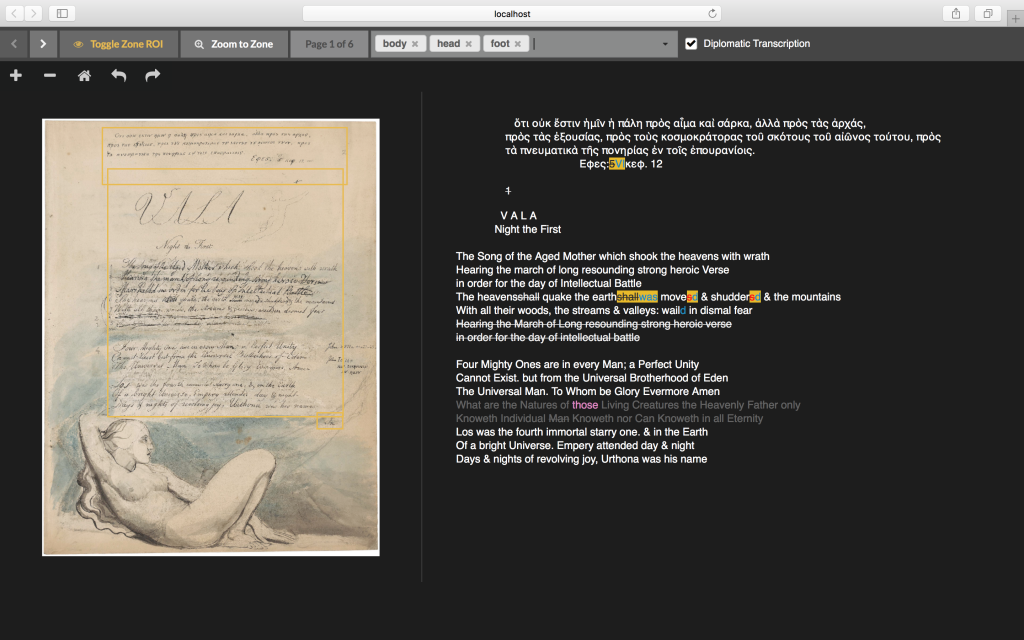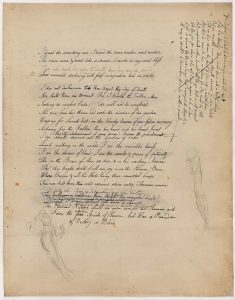As ever and as always, work continues on the Four Zoas.
When we last updated on our progress, our group was dealing with a final conceptual issue concerning line numbering and sequencing. We did, in fact, decide on a working solution: re-starting line numbers with each zone, but indicating marginal zones with a letter. For example, the text in the left margin of the object below would be numbered 1R, 2R, 3R, etc.
To us, this strategy is an acceptable negotiation of editorial intervention (which we’re trying to minimize) and the usefulness of line numbers as a citational or navigational tool. In other words, we want to identify each line on the page uniquely so that it could be cited and shared, but we don’t want to impose a sequence on the entire page, i.e. this block of text precedes that one, etc.
That was May.
The last six months have been a slow-motion hackathon for creating a working and interactive display for our edition of the Four Zoas. Our FZ subgroup in Rochester has been working closely with Josh Romphf in the [recently rebranded] Digital Scholarship Lab on campus. His programming expertise has been invaluable, and the project has become truly collaborative and interdisciplinary.
For those who want to get into the weeds a little bit, I can say that our primary task in creating a new display is to remake our current transcription viewer in JavaScript. Josh encouraged our use of JavaScript because of its flexibility, widespread use, and feature set. (For implementing all kinds of basic interactivity on a webpage, JS is a common approach.)
The key difficulty in remaking our display in JavaScript is dealing with our original XML files. XML files are the documents that contain all of our encoding (metadata, illustration description, transcription, etc.) for any given work in the Blake Archive. The website was set up to transform very complex XML files using, primarily, XSLT and then mapping that information to the HTML and CSS (basic web styling languages) that you see on the current site.
That XML–>XSLT–>Web ecosystem is pretty old-school in 2017, and yet it’s still very good at handling our needs for transformation and display, which to this point have been quite modest. Four Zoas, of course, changes those needs.
Creating a Four Zoas display in JavaScript has both solved and created problems. For the new, experimental, and interactive display features that we had in mind for a Four Zoas digital edition, JavaScript has been very accommodating. Most of our trouble has involved getting our “legacy” XML to work with JS.
Work is slow but steady, a lot of trial-and-error. Having worked on this project for a couple of years, however, it is encouraging to move beyond the conceptual stage and into production. We’re hoping to finish the display in the spring. After that, it’s only a matter of marking up and annotating 145 objects of some of the most challenging editorial work in literary history.
Deadpan humor aside, we feel confident we’re building a firm foundation for this first-ever digital edition of Blake’s Four Zoas, one that doesn’t simply repeat the successes and failures of previous print editions but one that takes full advantage of our digital medium to open up new levels of access and accuracy.
Here’s a sneak preview of the prototype (under construction, mind you):


